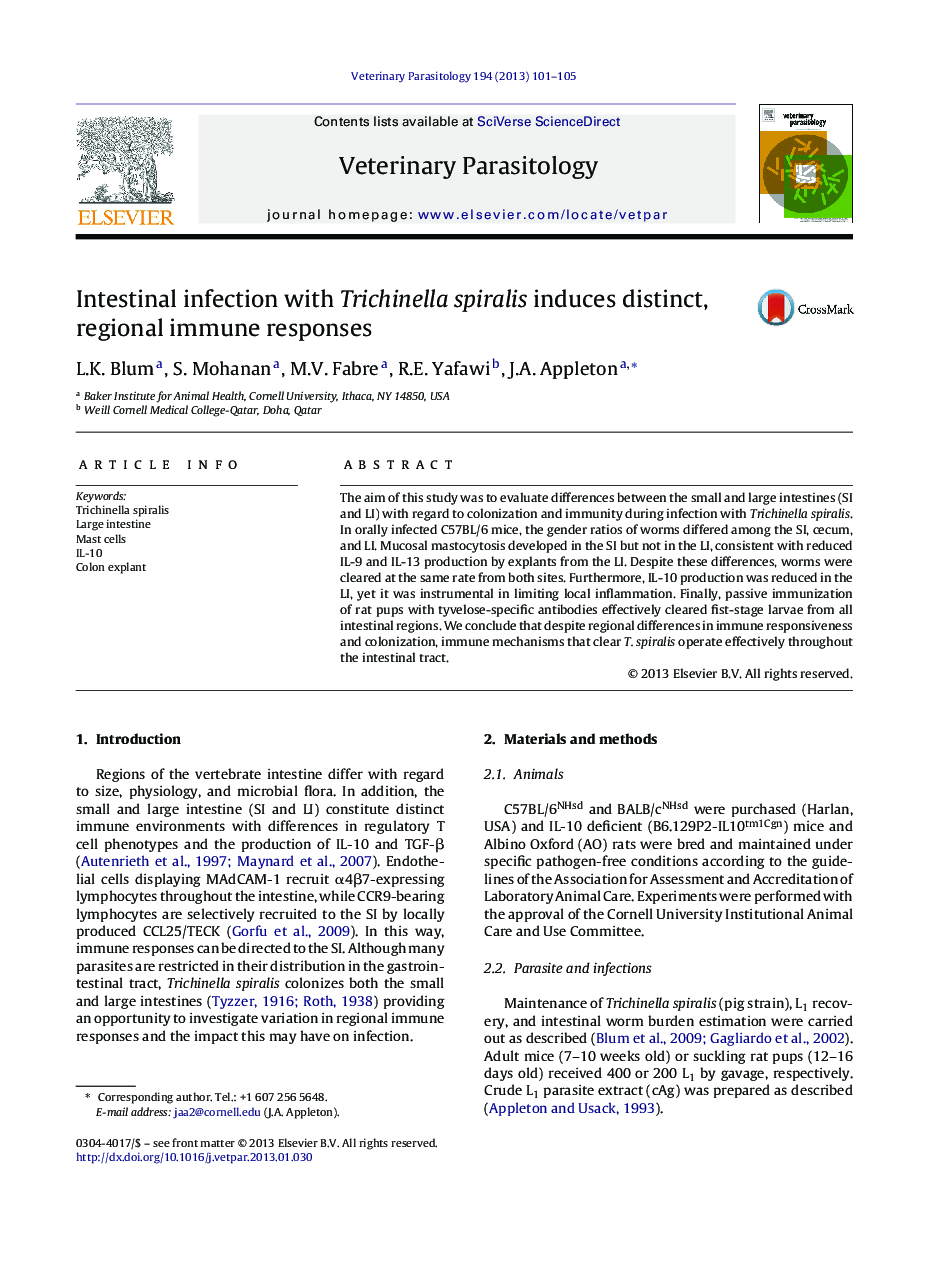| Article ID | Journal | Published Year | Pages | File Type |
|---|---|---|---|---|
| 2470053 | Veterinary Parasitology | 2013 | 5 Pages |
The aim of this study was to evaluate differences between the small and large intestines (SI and LI) with regard to colonization and immunity during infection with Trichinella spiralis. In orally infected C57BL/6 mice, the gender ratios of worms differed among the SI, cecum, and LI. Mucosal mastocytosis developed in the SI but not in the LI, consistent with reduced IL-9 and IL-13 production by explants from the LI. Despite these differences, worms were cleared at the same rate from both sites. Furthermore, IL-10 production was reduced in the LI, yet it was instrumental in limiting local inflammation. Finally, passive immunization of rat pups with tyvelose-specific antibodies effectively cleared fist-stage larvae from all intestinal regions. We conclude that despite regional differences in immune responsiveness and colonization, immune mechanisms that clear T. spiralis operate effectively throughout the intestinal tract.
